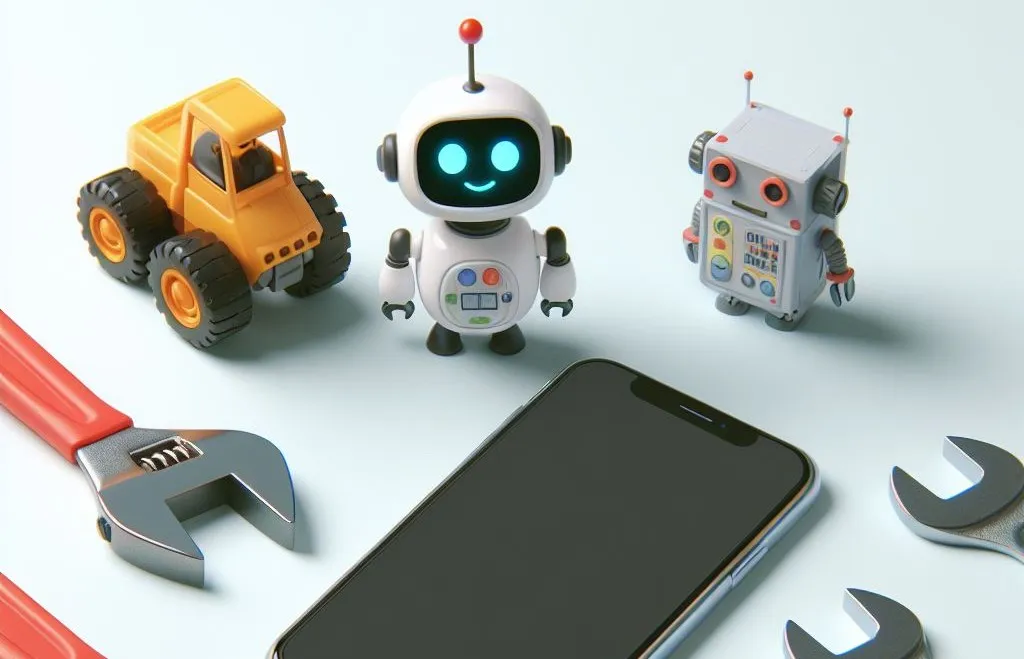AI is a Tool

AI is a Tool: learn to use just like you learned to use a calculator
AI is a tool, much like a calculator. We all have a vague idea of how a calculator works, but few of us can create one from scratch. Yet, we derive immense value from this simple device when we use it correctly. Think about it - bankers have built entire financial empires with the help of calculators. However, just like a calculator, AI’s true worth shines when wielded by someone who understands how to harness its potential.
In the military classic Full Metal Jacket, there’s a quote that encapsulates this idea perfectly:
Without me, my rifle is useless. Without my rifle, I am useless.
In the context of AI, it might go something like:
Without our guidance, AI is limited. Without AI, we miss out on its vast capabilities.
With this analogy in mind, let’s delve into the world of AI as a powerful tool, exploring its potential and the importance of using it wisely.

The Power of AI as a Helper
AI, akin to a tireless assistant, possesses the remarkable capability to aid us in countless ways. It’s not an exaggeration to say that AI has become an integral part of our daily lives. Just as a calculator simplifies complex mathematical calculations, AI simplifies various tasks, making them more efficient and accessible.
Consider content creation, for instance. With AI-powered tools, writers can automate repetitive tasks such as grammar checks and generating ideas, allowing them to focus on the creative aspects of their work. Entrepreneurs and business owners can use AI to analyze market trends and customer behavior, providing valuable insights for decision-making.
What makes AI truly exceptional is its ability to work tirelessly, processing vast amounts of data in seconds, something humans simply can’t match. This tireless nature makes AI an invaluable asset in fields like data analysis, where it can sift through immense datasets and identify patterns and trends that might go unnoticed by a human analyst.
In essence, AI, like a calculator, offers us the potential to achieve more with less effort. However, just as a calculator’s value depends on the skill and knowledge of the user, AI’s effectiveness also hinges on how it’s employed.

The Limitations of AI
One crucial limitation to consider is that just giving a single prompt in the hope of receiving a long, complex task done often doesn’t work well. While text-based AI, such as ChatGPT, offers incredible assistance, it’s not without its limitations. Imagine giving a calculator a vague or incomplete mathematical problem; it would struggle to provide an accurate solution. Similarly, when we provide a text-based AI with a brief or unclear prompt for a complex task, it may not deliver the desired output.
For instance, expecting AI to craft an entire in-depth research paper or design a complex software program with a single, short prompt is often unrealistic. AI may produce fragmented or incomplete results in such cases, leaving the user unsatisfied.
One of the primary limitations is context. AI lacks the human ability to understand context comprehensively. It processes information based on patterns and data it has been trained on but may miss nuances that humans easily grasp. For example, in a conversation, it might misinterpret the meaning of a word or phrase without the broader context.
Another challenge arises when dealing with ethical and controversial topics. Text-based AI may generate content that is biased, offensive, or inappropriate, as it learns from the data it’s trained on, which may contain biases. This underscores the importance of user guidance and ethical considerations when using AI.

Unleashing AI’s Potential
In this section, we’ll explore how engaging with text-based AI, like ChatGPT, in the right way can bring out its full capabilities for non-trivial objectives. To maximize the potential of AI, follow these steps:
- Crafting Comprehensive Prompts: Begin with a detailed prompt that provides clear guidance to the AI, much like setting up a well-defined mathematical problem for a calculator. A thorough prompt gives AI a roadmap to follow. Consider this prompt for blog content creation:
“Hey, I’ve read an interesting blog post about how to leverage your capabilities to enhance my blog writing process. Using this, here are some steps I’d like us to follow:
-
Coming Up With a Blog Idea: I’ll start by coming up with a blog idea so that I can give it to you.
-
Creating the Article Skeleton: I’ll outline the basic points for the blog, creating a structure. I want you to help me build a comprehensive skeleton for the blog article, suggesting additional points and filling in the subpoints.
-
Filling the Skeleton with Data and Information: For each section, I’ll provide the initial information. I’ll then engage you to rewrite this information in a coherent and engaging manner.
-
Creating the First AI Draft: After the skeleton is filled, I’ll provide the skeleton to you as input and ask you to generate a draft for the entire article based on your understanding.
-
Final Editing: Finally, I’ll use you for the editing process by giving you specific editing instructions. We’ll continue editing until we agree that each section is well-edited.
Are you ready to start this collaborative and iterative blog writing process?”
- Engaging in Conversations: After delivering a comprehensive prompt just converse with the AI. Here’s an important tip: when conversing to get better results, provide one goal at a time. AI often works more effectively when given a single goal in a message, as multiple goals in the same message can create confusion.
By adopting this approach, you can effectively collaborate with AI to accomplish your non-trivial objectives. The combination of a well-structured prompt and interactive conversation empowers AI to provide precise and context-aware assistance, much like the process of setting up a mathematical problem for a calculator to solve.

In conclusion, AI is indeed a tool, much like a calculator. It becomes an invaluable asset when used thoughtfully and skillfully. As you embark on your AI-powered journeys, remember the lessons from this article and unleash the full potential of AI.